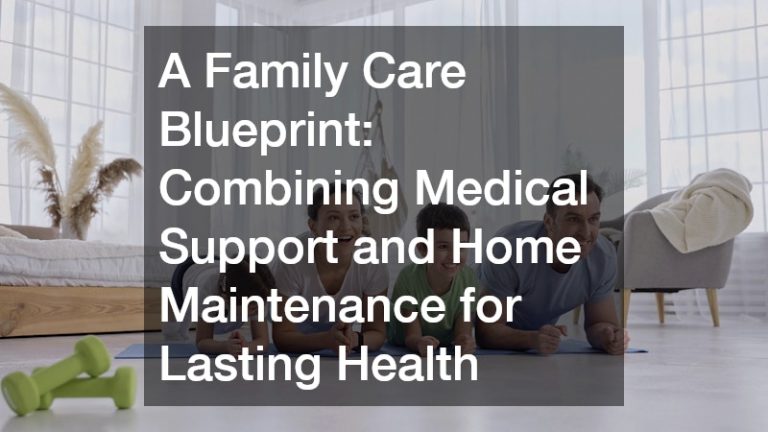A cancer diagnosis can feel like the ground shifting beneath your feet. In the space of a single conversation, your world changes—questions multiply, fear sets in, and uncertainty looms. It’s a moment where emotional and physical resilience are tested, often before any treatment begins. In the face of so many unknowns, it’s important to remember that healing is not just a medical process—it’s a personal journey. And while doctors, nurses, and loved ones all play vital roles, the first and most important step begins with you: helping yourself.
The path ahead will likely involve many forms of care, from clinical appointments to personal support systems. But just as no two people are the same, no two healing journeys look alike. There are choices to make that go beyond treatment plans—choices about comfort, self-image, emotional health, and home support. These decisions can empower you to play an active role in your healing, even when much of the process feels out of your control.
This blog offers a supportive guide for navigating this deeply personal experience. It explores a variety of practical and emotional resources that can ease your path—from understanding who should be on your care team to managing side effects, and from finding peace in everyday routines to redefining your sense of self. Each section focuses on a distinct area where support is not only available but essential. You’ll discover ways to strengthen your well-being by creating a network of care that works for you.
Healing is rarely linear. It comes in moments—sometimes physical, sometimes emotional, and often both. This guide doesn’t promise to eliminate the hardships of illness, but it does aim to offer a compassionate roadmap to remind you that you’re not alone. Whether you’re in the beginning stages of diagnosis or well into treatment, you have the power to take part in your healing process. This isn’t just about surviving—it’s about reclaiming your strength, nurturing your identity, and learning that the most powerful tool you have in this journey is you.
1. Finding Your Care Team
The journey toward healing begins with choosing the right people to guide you through it. Finding a compassionate and experienced care team can make all the difference. These professionals not only provide medical insight but also offer stability during moments of fear and confusion. Your care team can become your anchor, supporting you through every step of the healing process.
As you explore treatment avenues, you’ll quickly realize that care options vary by location, approach, and specialization. Many individuals start with recommendations from their general physicians or trusted local facilities. Seeking out local cancer treatment options allows you to stay close to home, making it easier to access ongoing appointments while remaining near your support system. Local providers are also more likely to understand community resources and offer referrals when needed.
Being able to trust your medical providers gives you the confidence to engage in the process actively. Helping yourself doesn’t mean doing it all alone—it means advocating for the care and communication you need. The right care team listens, answers questions with empathy, and helps create a treatment plan that aligns with your goals and values.
2. What to Expect in Care

Understanding what to expect from your health journey reduces anxiety and helps you prepare mentally, physically, and emotionally. Cancer care typically involves a team-based approach that includes physicians, specialists, and supportive care staff. You may undergo imaging, lab tests, biopsies, and consultations, all designed to determine the best treatment course for your condition.
Effective medical care is comprehensive, meaning it addresses not only the disease itself but also its side effects, emotional impact, and day-to-day implications. Communication is key. Ask questions about treatment plans, medication side effects, and timelines. Keep a notebook or app to track appointments, symptoms, and questions for your doctor. This active engagement helps you stay informed and in control.
Helping yourself in this context means staying educated, staying organized, and making sure your voice is heard. Even small steps like attending every appointment, asking clarifying questions, or bringing a loved one along for support can create a stronger connection between you and your care team.
3. Support You Can Trust
Behind every successful medical practice is a team of professionals who support both the doctors and the patients. Among these are assistants who help coordinate care and ensure patients feel seen and cared for. These team members are often your first point of contact at appointments and play a key role in easing communication between you and your providers.
A certified medical assistant handles more than just paperwork and vitals—they act as a liaison in your care journey. They may provide instructions before or after treatments, assist during exams, and ensure that follow-up care is scheduled properly. Their steady presence and medical knowledge make them an invaluable resource, especially during the more overwhelming phases of treatment.
Helping yourself includes recognizing the entire team that supports your recovery. Don’t hesitate to ask questions, share symptoms, or request guidance from the assistants who know your case. Their involvement can lead to a more personalized and effective care experience.
4. Exploring New Options

The world of cancer treatment is rapidly evolving, and more people are considering integrative therapies as part of their healing journey. Exploring new options can provide hope, especially when traditional treatments bring side effects or limited results. Many individuals find value in blending conventional care with complementary therapies that support wellness and vitality.
Among the options gaining attention are peptide therapy services, which involve using short chains of amino acids to target specific processes in the body. Some peptides may support immune response, promote recovery, or reduce inflammation. Though not a replacement for standard care, they can serve as a powerful adjunct under the guidance of experienced professionals.
Helping yourself means staying curious and open-minded. While navigating a diagnosis, you deserve to know about all safe and evidence-informed therapies available. Always consult your care team before starting something new, and work with licensed practitioners to evaluate what fits best with your unique needs.
5. Building Your Network
Healing is easier when you don’t walk the path alone. While family and friends are invaluable sources of strength, connecting with people who share similar experiences can be uniquely comforting. Building a personal support network gives you the emotional stamina to handle the ups and downs of treatment.
People exploring alternative therapies often benefit from peptide therapy support groups. These may be led by medical professionals or organized online. They provide a safe space to share experiences, discuss side effects, and celebrate small wins. Being part of a group allows you to learn from others while also offering your insight to those just beginning their journey.
Helping yourself through connection fosters strength, resilience, and emotional balance. Whether you attend group meetings, engage in online forums, or find a mentor in your community, leaning on others who understand your situation helps you feel less isolated.
6. Whole-Body Healing

True healing involves more than just eliminating disease. It also means restoring balance, peace, and vitality to your life. Many people undergoing cancer treatment find value in a whole-body approach that considers the emotional, spiritual, and physical components of well-being.
That’s where holistic doctors come in. These professionals integrate natural and complementary practices such as nutrition counseling, acupuncture, stress reduction techniques, and mind-body therapy. They often work in collaboration with conventional providers to offer a more personalized care model.
Helping yourself here means taking a step toward care that aligns with your philosophy. Whole-body healing can be especially valuable during times of emotional burnout or physical depletion. By nurturing every part of yourself, you create a foundation for deeper recovery.
7. Comfort Starts at Home
The place where you spend most of your time deeply affects your recovery. A safe, supportive, and calming environment can improve physical comfort, emotional well-being, and daily functionality. Modifying your home or seeking extra help can make a significant difference.
That’s where home care services come into play. They can range from professional nursing and therapy visits to personal assistance with daily tasks like bathing or meal prep. This care allows you to stay in a familiar space while still receiving professional support, often a major relief during the tougher phases of treatment.
Helping yourself by prioritizing comfort and ease in your daily life isn’t selfish—it’s smart. Whether it’s hiring a professional or enlisting help from loved ones, creating a space where you feel safe and supported is an essential part of healing.
8. Wellness Through Touch

Physical discomfort and emotional fatigue often go hand in hand during cancer recovery. While medical treatments focus on eliminating illness, touch-based therapies like massage, facials, or lymphatic drainage offer a different kind of healing—restorative, nurturing, and deeply grounding.
A local medical spa can be a refuge for those looking to relieve tension, reduce swelling, or simply relax. These spas often offer services tailored to people undergoing treatment, and their practitioners are trained in gentle, oncology-safe techniques that promote both comfort and confidence.
Helping yourself by embracing wellness services helps balance the clinical nature of cancer care with nurturing personal attention. Investing time in your comfort can uplift your mood and energize your spirit, both of which are essential to the healing journey.
9. Facing Changes Ahead
Cancer doesn’t just affect how you feel—it often changes how you look, too. One of the most emotionally charged aspects of treatment is the visible transformation that may come with it. Among the most common and distressing of these changes is the loss of hair.
Hair loss can be especially difficult because it alters your self-image and signals to others that you’re unwell. It’s a deeply personal experience, and everyone reacts differently. Some choose to shave their heads in advance, others wear hats, scarves, or wigs, and some embrace the change without covering up. The important thing is that the decision is yours.
Helping yourself through these changes means acknowledging your emotions and making choices that protect your confidence. You deserve to feel comfortable in your skin, whatever that looks like for you during this time.
10. Redefining Your Look
As you come to terms with outward changes, finding ways to reclaim your sense of self becomes essential. Appearance isn’t about vanity—it’s about identity, confidence, and normalcy during a time that feels anything but normal.
Visiting a wig shop can be a powerful step in restoring that identity. Many shops offer private fittings, trained staff, and customized options to help you find something that reflects your style. Whether you’re looking for something similar to your original hair or trying a whole new look, the experience can be empowering.
Helping yourself isn’t about looking like you used to—it’s about honoring who you are now. Taking control of your image, even in small ways, helps you stay grounded in your identity and reclaim part of your autonomy.
Healing from cancer is not a one-size-fits-all process. It’s a journey filled with milestones, setbacks, emotions, and breakthroughs. Each individual must navigate their path, finding meaning and strength in places they never expected. That’s why the concept of helping yourself is so central to every part of this guide. You are more than a patient—you are an active participant in your healing.
Throughout this blog, we’ve explored many supportive avenues to help you regain balance, wellness, and confidence. From choosing the right care team to exploring innovative therapies and redefining your self-image, each section is designed to offer real-world tools for emotional and physical restoration. The resources and services mentioned are not just luxuries—they’re powerful components of care that can make the difference between merely surviving and truly healing.
Whether you lean on holistic providers, invest in at-home support, or find strength in community, every effort you make is an act of healing. There’s no shame in asking for help, taking time to rest, or celebrating the small victories. Helping yourself is about more than staying positive—it’s about creating an environment, team, and mindset that support your well-being on every level.
You didn’t choose this path, but you do get to choose how you walk it. May this guide be a source of reassurance and strength as you move forward. Remember: healing is not a destination but a process, and every step you take toward caring for yourself—body, mind, and spirit—is a powerful step toward wholeness.






